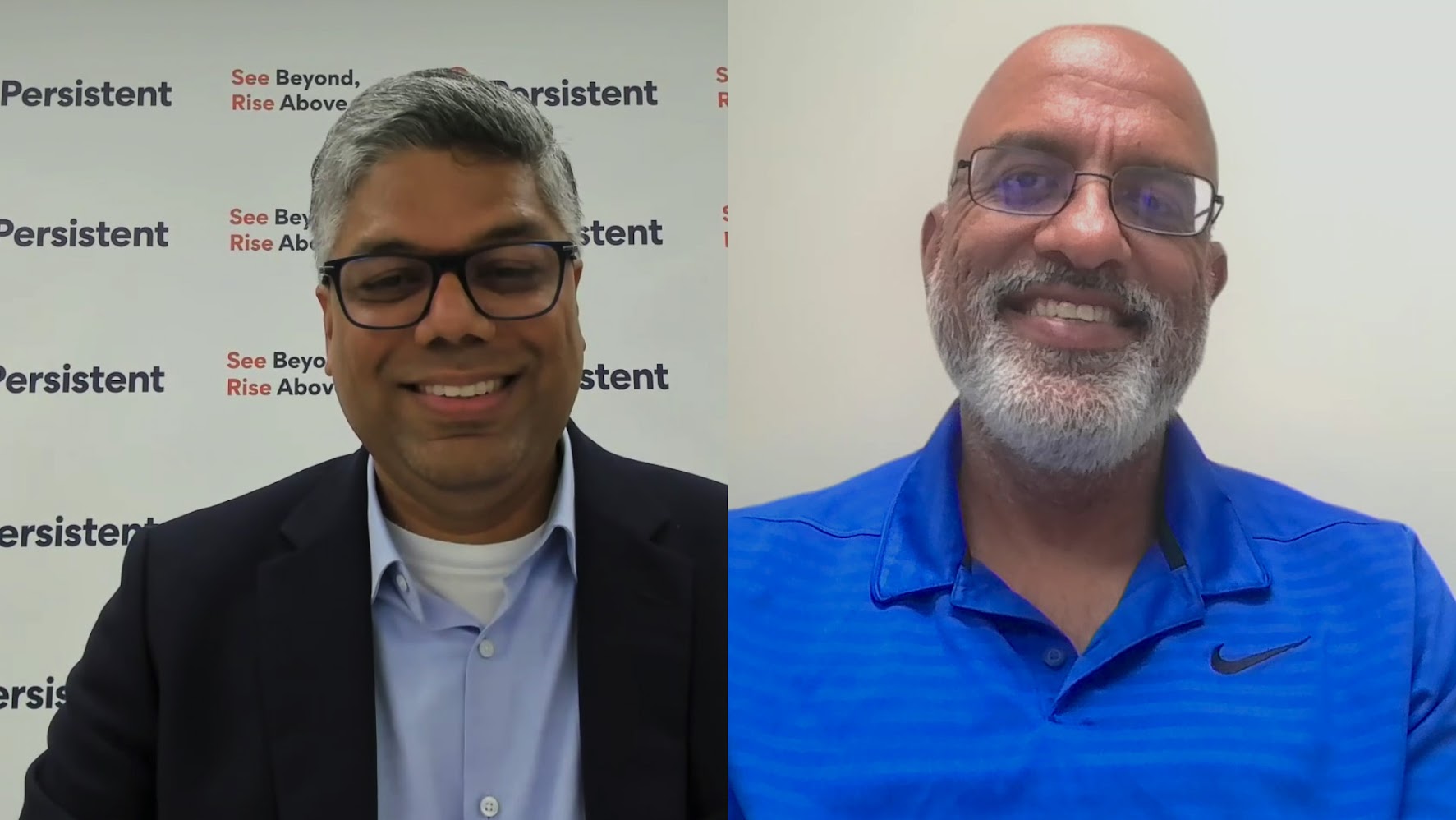 AI
AI
 AI
AI
 AI
AI
Can strategic procurement be a catalyst of change in business? Two enterprise practitioners believe it can, and they have seen how enabling and embracing data-driven procurement with a strategic mindset has generated results.
This approach represents a change for procurement from a siloed, short-term, fragmented process to one that is longer-term and meaningfully integrated in key operations of the business itself.
“The real change here is how the procurement function is a value creation function and not really a cost reduction function,” said Barath Narayanan (pictured, left), global head of the BFSI Unit and head of the Europe region at Persistent Systems Ltd. “It’s really more about the procurement function having a deeper understanding of the broader business goals. It’s when the procurement function is at the table at the executive level, clearly understands the macro business [and] priorities at each line of business, and they are very well positioned to influence the needs of the business organization with suppliers.”
Narayanan spoke with Shelly Kramer, managing director and principal analyst at theCUBE Research, in a CUBE Conversation on how strategic procurement transforms business. He was joined by Pratik Patel (right), director of category management, labor, at Mastercard International Inc., and they discussed key tenets of a successful strategic procurement operation. (* Disclosure below.)
An important element in strategic procurement is managing risk. Businesses enter into contracts with suppliers that can have far-reaching financial impact, requiring procurement organizations to manage and influence relationships without jeopardizing a company’s health.
“From a risk perspective, we are the first and last line of defense,” Patel said. “It’s important that we understand the intent of everything we have in those … agreements, or whatever the different contracts there could be. We need to be that influencer in a sense with the supplier to ensure that they understand what risk they need to manage. Procurement needs to take a more proactive role in being able to really help manage that risk.”
Relationships with suppliers extend beyond the process of managing risk. A true partnership is important in building a successful procurement operation, according to Narayanan.
“As much as the procurement function has consideration of the internal stakeholders as their own clients, equally there is an importance of building a relationship with the external suppliers,” he said. “They’re not vendors, but truly partners.”
Brand identity is an important part of strategic procurement, according to Patel. The value that procurement brings to an organization can be a key factor in recognizing the group’s critical role.
“It really does start with an understanding of the value that procurement brings and that is with establishing the brand,” Patel said. “When you think about procurement, we want people to think about a value enabler. It’s important to ensure that there is a brand established for what procurement stands for, and it all centers on better, faster, cheaper. Because when you do things faster for people, when you have a better quality output for people, and if you happen to reduce costs for them too, it’s hard for people not to rally around that.”
To build a successful brand for procurement, practitioners are increasingly leveraging data to generate insights and build relationships.
“Procurement actually has an enormous amount of data,” Narayanan said. “How you convert the data for your decision-making on spend analytics, how you build insights on the data that is already existing … brings new ways of working with your partners, with your internal stakeholders.”
Narayan also noted that growing adoption of generative AI offered an opportunity to extend value to business users in the procurement arena.
“Have people engage with the data that you have,” he said. “The business users can actually chat and engage with that to get insights on the fly, on the fact that you don’t need multiple people interventions. You provide transparency to your business users on your data.”
Mastercard took a forward-thinking view of strategic procurement through a project that involved systems within the legal department. It provided an example of how procurement principles could be applied to eliminate pain points in other organizations.
“We established the future state where we could utilize our ‘procure-to-pay’ system, where the legal department can get the value that they need as well and we addressed their pain points,” Patel stated. “Today, we’re more than five years in, and we’re utilizing this and it’s working beautifully. They saw the value of it and now they keep things up to date too, they invest in that.”
Here’s the complete CUBE Conversation with Barath Narayanan and Pratik Patel:
(* Disclosure: Persistent Systems Inc. sponsored this segment of theCUBE. Neither Persistent Systems nor other sponsors have editorial control over content on theCUBE or SiliconANGLE.)
Support our mission to keep content open and free by engaging with theCUBE community. Join theCUBE’s Alumni Trust Network, where technology leaders connect, share intelligence and create opportunities.
Founded by tech visionaries John Furrier and Dave Vellante, SiliconANGLE Media has built a dynamic ecosystem of industry-leading digital media brands that reach 15+ million elite tech professionals. Our new proprietary theCUBE AI Video Cloud is breaking ground in audience interaction, leveraging theCUBEai.com neural network to help technology companies make data-driven decisions and stay at the forefront of industry conversations.